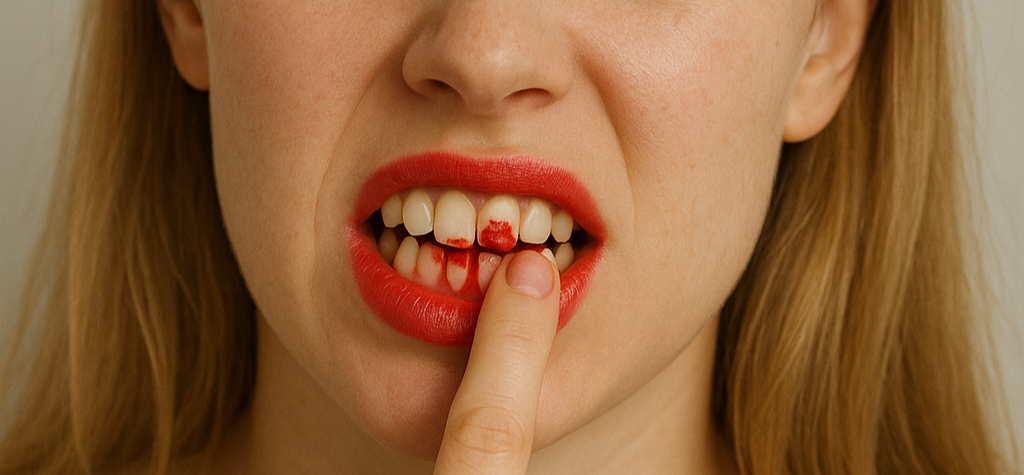The problem
Anyone who wears lipstick knows this: While wearing lipstick or even during application, color gets onto your teeth. This everyday problem clearly illustrates how our tooth surface works.
Why does lipstick stick to teeth?
Lipstick is extremely finely pigmented. And these fine pigments tend to cling to the rough tooth surface. This is caused by a process called remineralization, in which saliva attempts to replace the crystals dissolved, for example, by the fruit acid in an apple. Unfortunately, this often results in a certain roughness. We polish this away with Denttabs thanks to the high cellulose (wood) content.
Smooth teeth – not to be underestimated
A smoothly polished tooth surface significantly reduces the adhesion of color pigments and residue. This means no lipstick marks, no food residue—and therefore a lower risk of plaque and tooth decay. Therefore, polishing your teeth is not just a cosmetic measure, but also an important part of your oral and dental care!
Prevention through a changed dental care routine
Denttabs gently polish teeth while brushing, noticeably refining their surface texture. They remove the crystals that cause roughness in the tooth surface.
The result: super-smooth teeth! Reduced risk of cavities! (Tip: Maximize the polishing effect with our ultra-soft toothbrush!) And: lipstick won't stick either.
Live test
This is exactly what was tested in Eva List 's podcast: Click here for the podcast (from 11:10)
Conclusion:
Anyone who wants to minimize the risk of tooth decay should, above all, optimize their oral and dental care routine. To achieve this, the teeth must be polished smooth.





Split:
The surprising tulip test
Letting go of old habits: Step by step to new routines